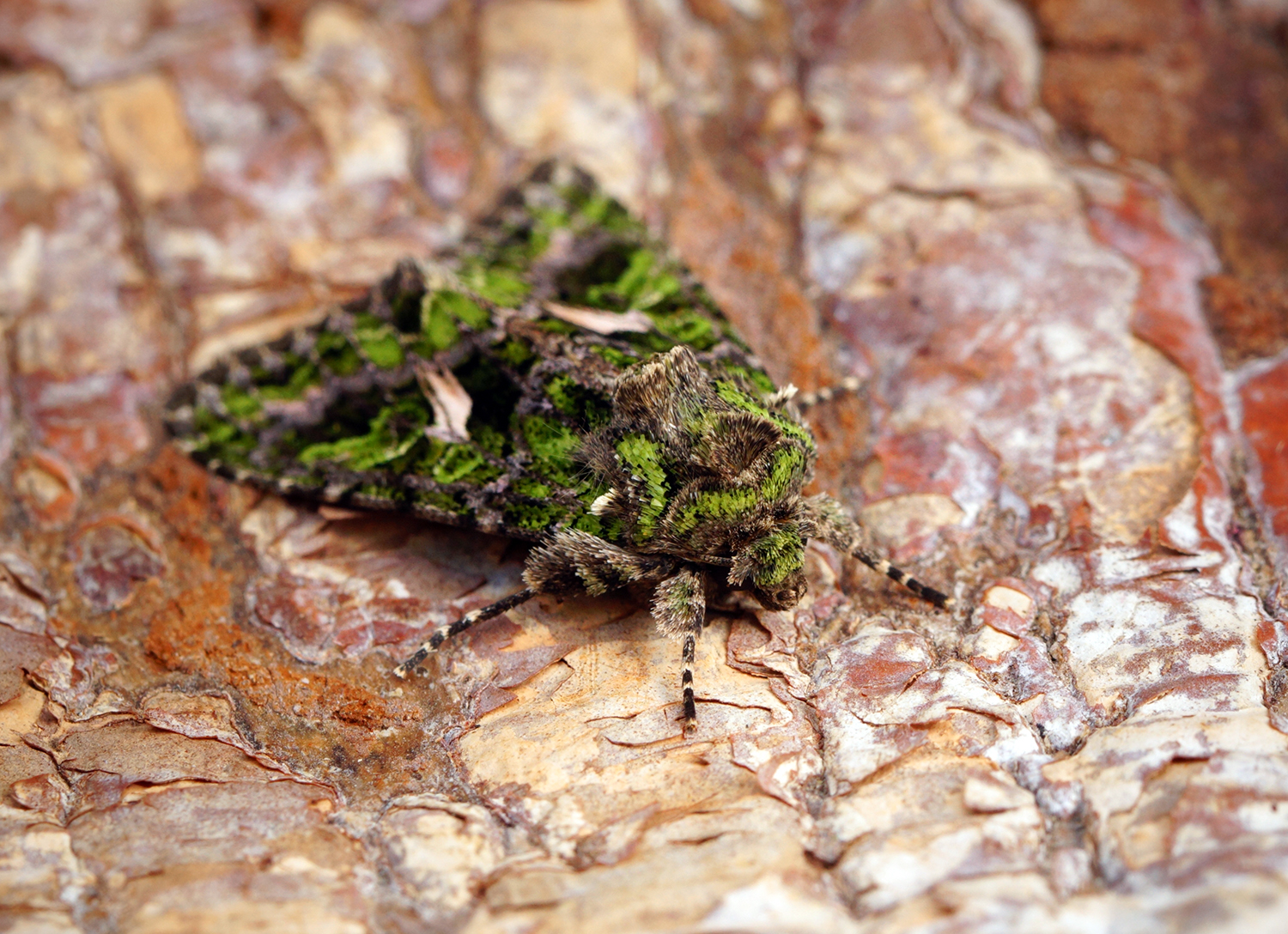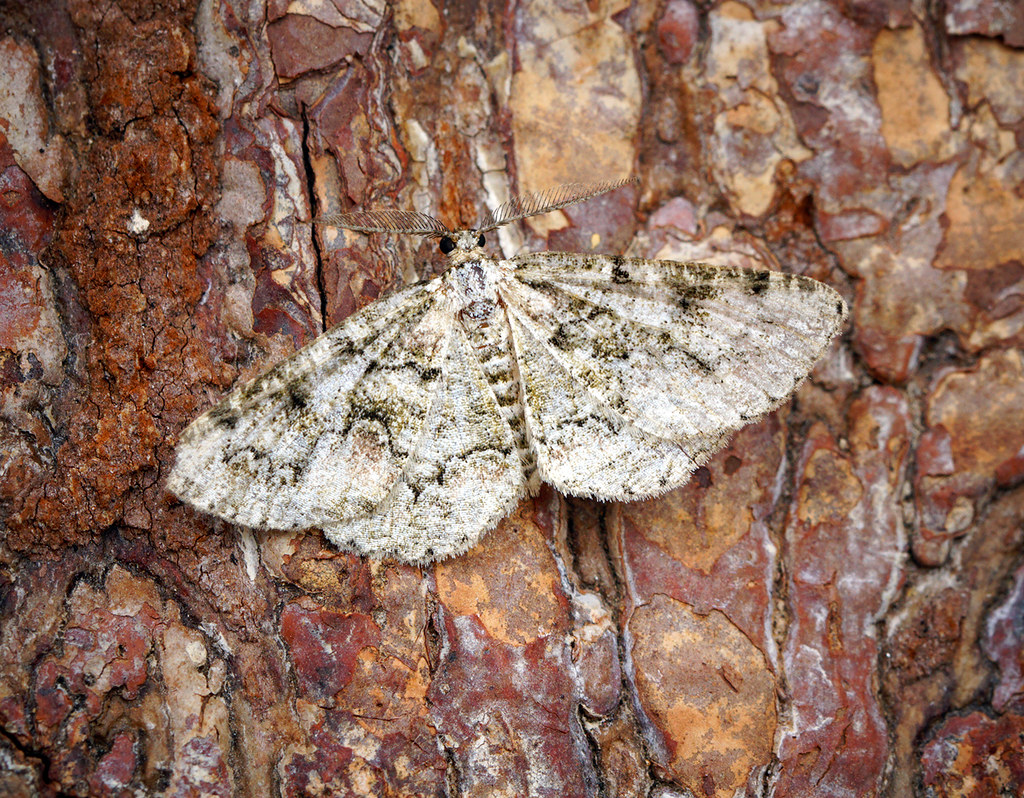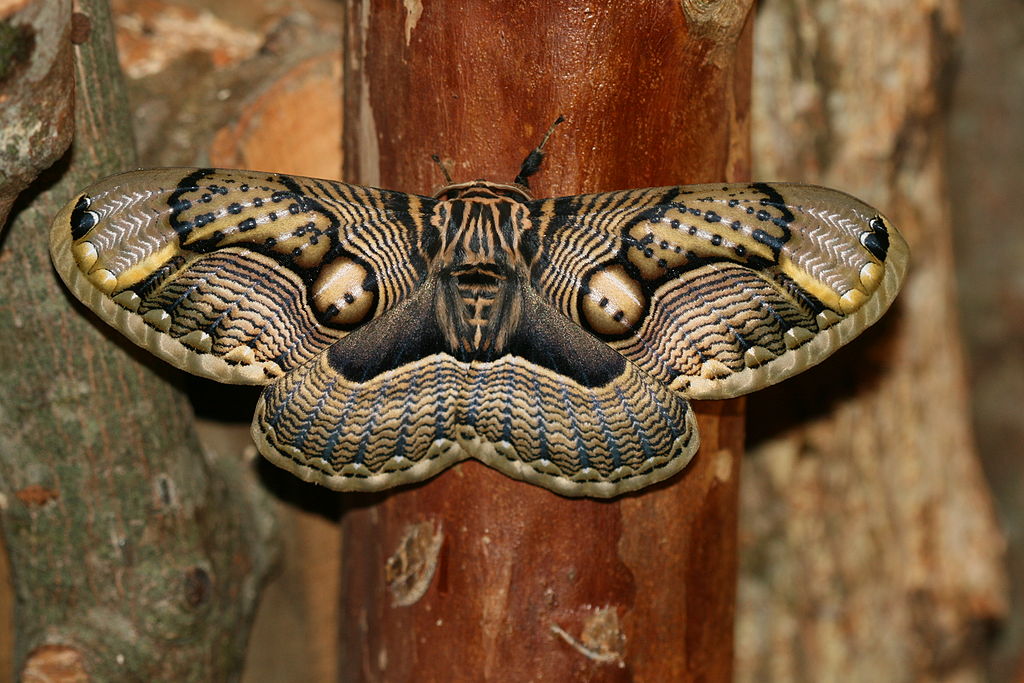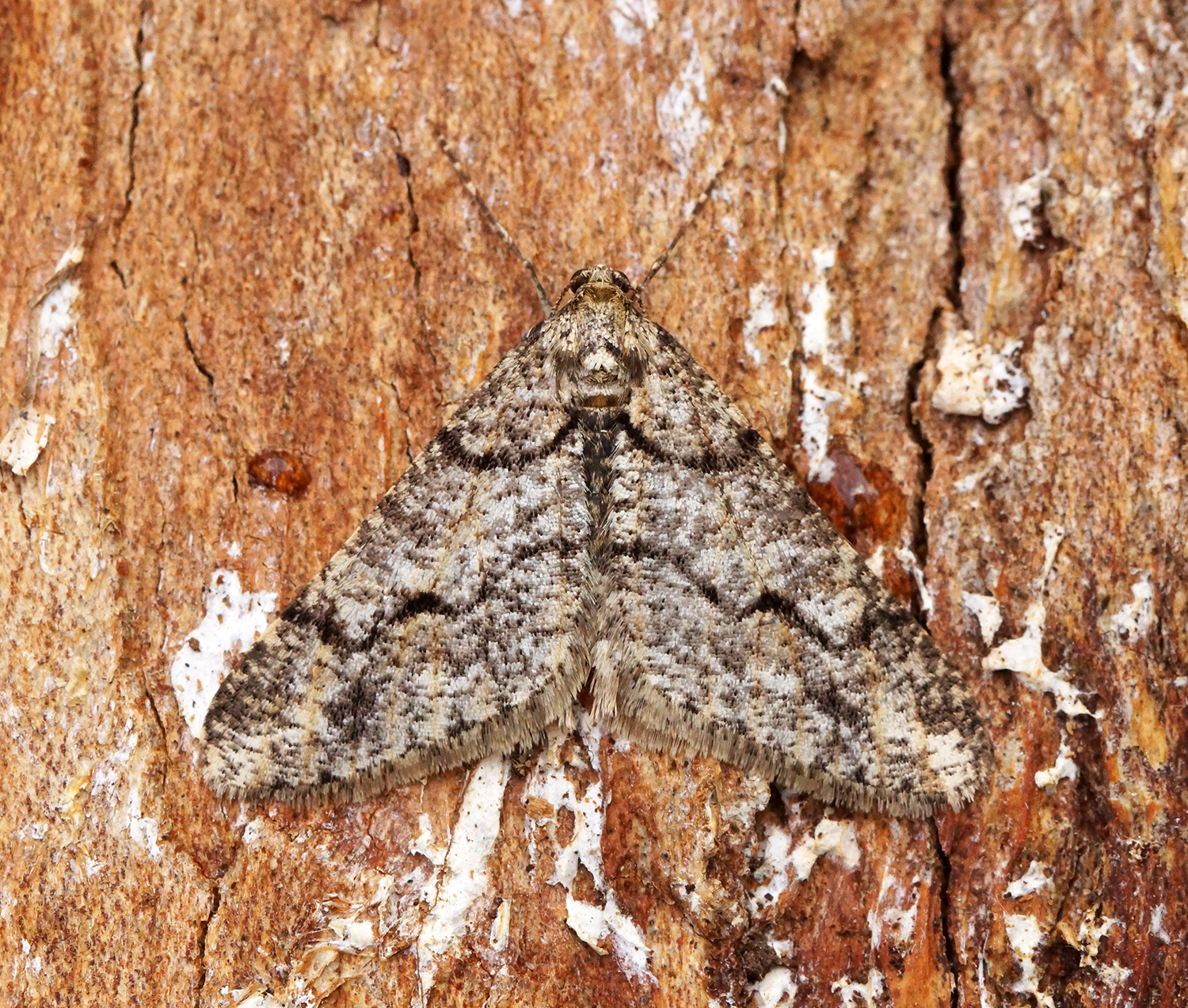Most people think of moths as delicate creatures that vanish at the first sign of winter, but they couldn’t be more wrong. While you’re bundled up in layers, shivering at your front door, some of nature’s most remarkable moths are dancing through snowflakes with wings that refuse to freeze. These cold-weather champions have evolved extraordinary adaptations that would make even the best winter gear manufacturers jealous.
The Antifreeze Proteins Revolution

Deep within the cells of cold-weather moths lies one of nature’s most sophisticated survival mechanisms: antifreeze proteins. These remarkable molecules work like microscopic bodyguards, preventing ice crystals from forming in the moth’s body fluids. Unlike the antifreeze in your car, these proteins don’t lower the freezing point dramatically—instead, they bind to tiny ice crystals and stop them from growing larger. The winter moth (Operophtera brumata) produces these proteins in such high concentrations that they can survive temperatures that would instantly kill tropical species. Scientists have discovered that these proteins are so effective, they’re now being studied for potential applications in organ preservation and even ice cream manufacturing.
Metabolic Furnaces in Miniature Bodies
Think of a moth’s flight muscles as tiny furnaces that never stop burning. Cold-weather moths have evolved supercharged metabolisms that generate heat through rapid muscle contractions, even when they’re not flying. This process, called thermogenesis, allows them to maintain body temperatures well above the surrounding air temperature. The gypsy moth can raise its body temperature by up to 20 degrees Fahrenheit above ambient temperature through this internal heating system. It’s like having a personal space heater built into their chest cavity, powered by stored fats and sugars that act as high-octane fuel for their biological engines.
Wing Architecture That Defies Physics

The wings of cold-weather moths are architectural marvels that would impress any engineer. Their wing scales are arranged in overlapping patterns that create tiny air pockets, forming an insulating layer that traps warm air close to the wing surface. This microscopic down jacket prevents heat loss while maintaining the aerodynamic properties needed for flight. Each wing scale is hollow and filled with air, creating thousands of microscopic insulation chambers. The geometry of these scales also helps shed ice crystals before they can accumulate and add weight that would ground the moth. It’s a perfect example of form following function in nature’s design laboratory.
The Glycerol Defense System

Cold-weather moths flood their bodies with glycerol, a natural antifreeze compound that works similarly to the ethylene glycol in your car’s radiator. This sweet-tasting molecule lowers the freezing point of their body fluids and prevents cellular damage from ice crystal formation. Some species can increase their glycerol concentration by up to 300% as winter approaches. The production of glycerol is triggered by shortening daylight hours and dropping temperatures, like a biological early warning system. Moths begin stockpiling this life-saving compound weeks before the first frost, ensuring they’re ready when winter arrives with its frozen fury.
Behavioral Thermoregulation Tactics

Cold-weather moths are masters of behavioral thermoregulation, using clever strategies to stay warm without expending precious energy. They seek out dark surfaces that absorb solar radiation during the day, positioning themselves to capture every available calorie of heat. Tree bark, dark rocks, and even human-made structures become their personal heating pads. Many species engage in “pre-flight warm-up” behaviors, rapidly vibrating their flight muscles while keeping their wings folded to generate heat before takeoff. This is similar to how runners stretch before a race, but for moths, it’s literally a matter of life or death in freezing temperatures.
The Cryptic Coloration Advantage
The mottled browns, grays, and blacks of cold-weather moths aren’t just for camouflage—they’re sophisticated heat management systems. Dark colors absorb more solar radiation, helping moths warm up faster during brief sunny periods. Light-colored patches reflect excess heat during warmer parts of the day, preventing overheating that could be just as dangerous as freezing. Some species can even adjust their wing positioning to expose more or less dark surface area to sunlight, like natural solar panels that track the sun’s movement. This behavioral flexibility gives them precise control over their heat absorption throughout the day.
Fat Storage and Energy Management
Cold-weather moths are like tiny bears preparing for hibernation, but instead of sleeping through winter, they stay active and burn through massive fat reserves. They can store up to 40% of their body weight in fat, which serves as both insulation and fuel for their high-energy winter lifestyle. This fat is stored in specialized cells that can be quickly mobilized when energy demands peak. The efficiency of their fat-burning metabolism is astounding—they can extract more energy per gram of fat than many warm-blooded animals. This metabolic mastery allows them to maintain their active lifestyle even when food sources are scarce and temperatures plummet.
Hemolymph Modifications for Extreme Cold

The hemolymph (insect equivalent of blood) in cold-weather moths undergoes dramatic chemical changes as winter approaches. It becomes thicker and more viscous, reducing the formation of ice crystals while maintaining essential circulation. Additional proteins and sugars are dissolved into this vital fluid, creating a biological antifreeze cocktail. These modifications also help maintain blood pressure and circulation in extreme cold, ensuring that oxygen and nutrients continue flowing to vital organs. The hemolymph essentially becomes a specialized winter survival fluid that would be impossible to replicate artificially.
Specialized Sensory Adaptations

Cold-weather moths have evolved enhanced sensory systems that function perfectly in conditions that would disable the nervous systems of warm-weather species. Their compound eyes contain specialized proteins that prevent the optical fluids from freezing, maintaining clear vision even in sub-zero temperatures. Their antennae, crucial for detecting mates and food sources, are equipped with antifreeze compounds that keep sensory receptors functioning. These adaptations allow them to navigate, find mates, and locate food sources in conditions where other insects would be effectively blind and deaf. It’s like having night vision goggles and radar that work in a blizzard.
The Timing of Winter Activity

Cold-weather moths have mastered the art of timing their activities to coincide with the most favorable conditions. They often become active during brief warming periods, taking advantage of every degree of temperature rise to accomplish essential tasks like mating and egg-laying. Some species are most active during winter storms, when temperatures are actually more stable than during clear, cold nights. This precise timing is controlled by sophisticated biological clocks that can detect subtle changes in barometric pressure, humidity, and temperature. They essentially have built-in weather forecasting systems that would make meteorologists envious.
Mating Strategies in Freezing Temperatures
Finding a mate in winter conditions requires extraordinary adaptations, and cold-weather moths have developed remarkable strategies. Males can detect female pheromones from much greater distances than warm-weather species, compensating for the reduced molecular movement of scent chemicals in cold air. Some species engage in communal warming behaviors, clustering together to share body heat during mating activities. The mating process itself has been modified to work in extreme cold, with enhanced grip structures on their legs and specialized positioning behaviors that minimize heat loss. Love truly finds a way, even in the harshest conditions nature can provide.
Egg Protection and Overwintering Strategies

Uploaded by ComputerHotline, CC BY 2.0, https://commons.wikimedia.org/w/index.php?curid=7716694)
Cold-weather moths don’t just survive winter themselves—they ensure their offspring can too. Their eggs are coated with specialized proteins and waxy substances that provide insulation and prevent moisture loss. Many species choose oviposition sites that take advantage of microclimate conditions, such as bark crevices that provide wind protection and slight temperature moderation. Some species produce eggs with built-in antifreeze properties, ensuring that the next generation begins life with the same cold-weather superpowers. These eggs can survive being frozen solid for months, then hatch normally when spring arrives.
Predator Avoidance in Winter Landscapes

Winter brings unique predation challenges, and cold-weather moths have evolved strategies to avoid becoming easy meals for birds, spiders, and other predators that remain active in cold weather. Their flight patterns become more erratic and unpredictable in cold conditions, making them harder to catch. Many species have developed enhanced startle responses and escape behaviors that work effectively even when their reflexes are slowed by cold. Some cold-weather moths actually benefit from winter conditions because many of their predators are less active or absent entirely. This creates windows of opportunity for feeding and reproduction that wouldn’t exist during warmer months when predation pressure is intense.
The Future of Cold-Weather Moth Research

Scientists are increasingly fascinated by cold-weather moths as climate change alters winter patterns worldwide. These remarkable insects serve as living laboratories for understanding how life adapts to extreme conditions. Research into their antifreeze proteins, metabolic adaptations, and behavioral strategies is leading to breakthroughs in fields ranging from medicine to materials science. As we face an uncertain climatic future, these moths may hold keys to understanding resilience and adaptation that could benefit countless other species. Their survival strategies, perfected over millions of years of evolution, offer insights that could help us prepare for a changing world.
Conclusion
Cold-weather moths represent some of nature’s most extraordinary survivors, armed with biological technologies that seem almost supernatural in their effectiveness. From antifreeze proteins that prevent cellular damage to metabolic furnaces that generate heat in the smallest of bodies, these creatures have mastered the art of thriving where others merely survive. Their wing architecture, behavioral adaptations, and chemical modifications work together in perfect harmony to create living proof that life finds a way, even in the most challenging conditions. The next time you see a moth fluttering past your window on a cold winter night, remember that you’re witnessing one of evolution’s greatest success stories. These aren’t just insects that happen to be active in winter—they’re specialized winter warriors whose very existence challenges our understanding of what’s possible in the natural world. What secrets might these winter survivors still be hiding in their frost-resistant wings?

